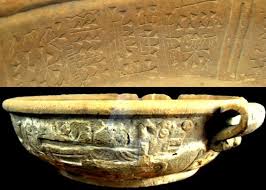
|
|||
Mysteries of The Fuente Magna of Pokotia Bolivia
Source : http://www.faculty.ucr.edu/~legneref/archeol/fuentema.htm
In 1549, while searching for the capital of the Inca Empire, Spanish conquistadors, led by Pedro Cieza de León crossed into Bolivia and discovered the ruins of Tiahuanaco. Less than a quarter mile northeast of Puma Punku, scientists believe Tiahuanaco was once the center of a civilization with more than 40,000 inhabitants. Located at the Precious Metals Museum in La Paz Bolivia, they find the famous Fuente Magna bowl, a unique piece of ceramic that contains what some believe is one of the biggest secrets of ancient man kind. The Fuente Magna Bowl was discovered near Tiahuanaco and Lake Titicaca by a local farmer in the 1950’s. Researchers worldwide believe that this ceramic bowl provides proof of otherworldly contact at Puma Punku. The Fuente Magna bowl was found accidentally by a worker from the CHUA Hacienda, property of the Manjon family located near Lake Titicaca about 75-80 km from the city of La Paz, Bolivia (see Photo). The site where it was found had not been studied for artifacts previously. The Fuente Magna is beautifully engraved in earthen-brown both inside and out and bears zoological motifs and anthropomorphic characters within (Please see Bernardo Biados for further detail). The Bolivian archeologist, don Max Portugal-Zamora, learned of the Fuente Magna’s existence around 1958-1960 from his friend Pastor Manjon. Both gave the site the name it bears today, "Fuente Magna" (see Spanish account). A controversy arose about the cuneiform script on the Fuente Magna. Dr. Alberto Marini, translated it and reported that it was Sumerian.. After a careful examination of the Fuente Magna, linear script Dr. Clyde A. Winters determined that it was probably Proto-Sumerian, which is found on many artifacts from in Mesopotamia. An identical script was used by the Elamites called Proto-Elamite. 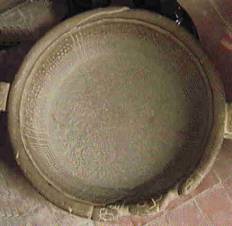 Dr. Winters believed that researchers had been unable to read the writing because they refused to compare Proto-Elamite and Proto-Sumerian writing with other writing systems used in 3000-2000 BC. He compared the writing to the Libyco-Berber writing used in the Sahara 5000 years ago. This writing was used by the Proto-Dravidians (of the Indus Valley), Proto-Mande , Proto-Elamites and Proto-Sumerians. These people formerly lived in Middle Africa, until the extensive desertification of the Sahara began after 3500 BC. A Mr. Rawlinson, was sure that the Sumerians had formerly lived in Africa, and he used Semitic and African languages spoken in Ethiopia to decipher the cuneiform writing. Rawlins called the early dwellers of Mesopotamia: Kushites, because he believed that the ancestors of these people were the Western Kushites of Classical literature. Winters noted that the Libyco-Berber script couldn’t be read using the Berber language, because the Berbers only entered Africa around the time the Vandals conquered much of North Africa. Although the Libyco-Berber script cannot be read using the Berber language, it can be read using the Mande language. This is because the Proto-Mande formerly lived in Libya, until they migrated from this area into the Niger valley of West Africa.
By comparing the Fuente Magna scripts and symbols with the Vai writing, Winters found many matches. Then after referring to several published works on the Sumerian language and writing system, e.g., C.S. Ball, Chinese and Sumerian (London, 1913), and John A. Halloran, Sumerian Lexicon, ( http://www.sumerian.org/sumer/ex.htm ), he was able to decipher the Fuente Magna writing. 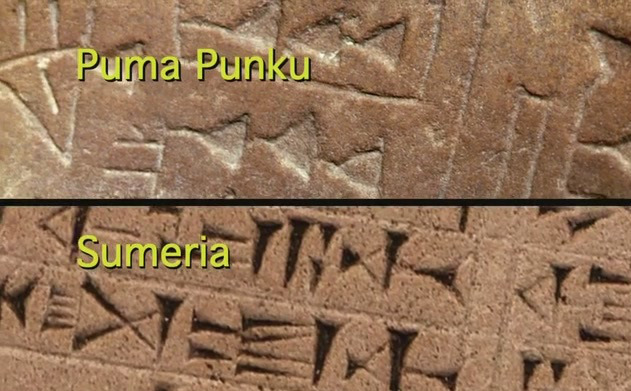 He found that the Fuente Magna inscriptions are in the Proto-Sumerian script, and the symbols have several Proto-Sumerian signs joined together to represent words and sentences. He presented two figures that separate the Fuente Magna signs into their constituent parts so they could be interpreted using the phonetic values of the Vai writing he showed the separation of the Fuente Magna signs into their separate parts. Following is a transliteration of the inscriptions on the right side of the Fuente Magna, reading from top to bottom and right to left. 1. Pa ge gi 2. Mi lu du 3. I mi ki 4. me su du 5. Nia po 6. Pa 7. Mash 8. Nia mi 9. Du lu gi 10 . Ka me lu 11 . Zi 12 . Nan na pa-I Winters then gave the following translation: "(1) Girls take an oath to act justly (this) place. (2) (This is) a favorable oracle of the people. (3) Send forth a just divine decree. (4) The charm (the Fuente Magna) (is) full of Good. (5) The (Goddess) Nia is pure. (6) Take an oath (to her). (7) The Diviner. (8) The divine decree of Nia (is) , (9) to surround the people with Goodness/Gladness. (10) Value the people's oracle. (11) The soul (to), (12) appear as a witness to the [Good that comes from faith in the Goddess Nia before] all mankind." 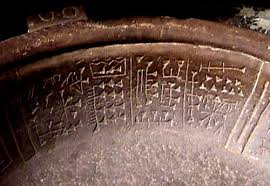 Then the transliteration of the inscriptions on the left side of the Fuente Magna is as follows: . 1. Tu ki a mash pa 2a . Lu me lu ki mi 2b. Pa be ge 3. Zi 4. lu na 5 . ge 6. du po 7. I tu po 8. lu mi du This section was translated as follows (please see Figure 3) " (1) Make a libation (this) place for water (seminal fluid?) and seek virtue. (2a) (This is) a great amulet/charm, (2b) (this) place of the people is a phenomenal area of the deity [Nia's] power. (3) The soul (or breath of life). (4) Much incense, (5) to justly, (6) make the pure libation. (7) Capture the pure libation (/or Appear (here) as a witness to the pure libation). (8) Divine good in this phenomenal proximity of the deity's power." This decipherment of the inscriptions on the Fuente Magna indicates that it was used to make libations to the Goddess Nia to request fertility, and to offer thanks to the bountiful fauna and flora in the area that made it possible for these Sumerian explorers to support themselves in Bolivia.  Of particular interest is that the people of the Fuente Magna, referred to the Goddess as Nia. Nia, is the Linear-A term for Neith. Neith is the Greek name for the Egyptian Goddess Nt or Neit, Semitic Anat. This goddess was very popular among the ancient people of Libya and other parts of Middle Africa, before these people left the region to settle Mesopotamia, the Indus Valley and Minoan Crete. Dr. Winters noted that his translation of the Fuente Magna inscriptions supports the hypothesis of Awen Dawn that the Fuente was used in celebration of the Goddess religion of the ancient people of Bolivia. Awen Dawn recognized that the figure on the Fuente Magna was in a Goddess pose, with open arms and legs spread, which supports Winters’ translation.. In addition, the identification of symbols on the bowl by Awen that relate to European signs for the Mother Goddess, probably reflects the early influence of the Goddess Neith on the mainland of Greece and Crete. 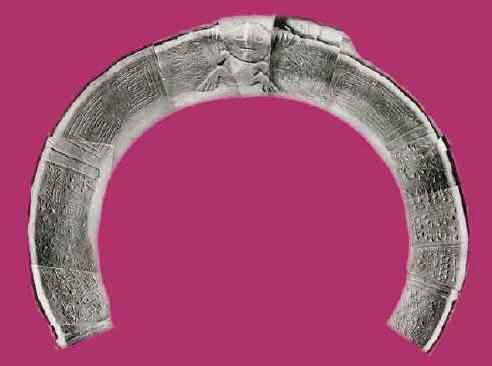 It is believed that the Fuente Magna was probably crafted by Sumerian people who settled in Bolivia sometime after 2500 BC. The Sumerians used seaworthy ships that were known to sail to the distant Indian Subcontinent. Some Sumerian ships most likely made their way around South Africa and entered one of the currents in the area that lead from Africa across the Atlantic to South America and thence to the Pacific Ocean. They would have then searched for areas on the high plateau of Bolivia where food was being produced by the local inhabitants. They held the bowl in high esteem and were fastidious about its transport around the area. It should be noted that there was one challenge to the authenticity of the Fuente Magna by skeptics who suggested that it was a fabrication by archeologists to gain international attention. The overwhelming support from the major portion of the academic community should discredit this criticism, as it has in times past when challenges arose to the existence of any writing at all in the Americas (e.g., that of the Olmec and Maya). comments powered by Disqus Submit News/Videos/Links | Discuss article | Article Link More Unsolved and Unexplained Mysteries |
More can be addded on request. Direct your requests at vinit@theunexplainedmysteries.com
